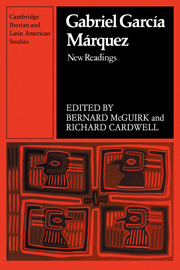Book contents
- Frontmatter
- Contents
- List of figures
- List of tables
- Preface
- List of abbreviations
- Note on currency
- Introduction
- PART ONE CASTILE AND THE RELIEF OF THE POOR
- PART TWO POVERTY AND WELFARE IN TOLEDO
- 3 The city of Toledo
- 4 Private charitable institutions
- 5 The recipients of relief
- Notes
- Select bibliography
- Index
4 - Private charitable institutions
Published online by Cambridge University Press: 05 November 2011
- Frontmatter
- Contents
- List of figures
- List of tables
- Preface
- List of abbreviations
- Note on currency
- Introduction
- PART ONE CASTILE AND THE RELIEF OF THE POOR
- PART TWO POVERTY AND WELFARE IN TOLEDO
- 3 The city of Toledo
- 4 Private charitable institutions
- 5 The recipients of relief
- Notes
- Select bibliography
- Index
Summary
HOSPITALS AND CONFRATERNITIES
This chapter focusses on the primary institutions of poor relief, the hospitals and the confraternities. Though these were the most important institutions, they were by no means the only ones. For instance, in the cathedral cloister bread was distributed on a daily basis to some thirty poor people and the 600 fanegas of wheat that comprised this gift was paid for by the cathedral chapter, the prelate and the account for building and maintenance; the cathedral chapter administered two bequests that provided dowries for poor girls; and the respective heads of the Franciscan and the Dominican monasteries of the city were responsible for distributing 1,000 ducats to the poor in fulfilment of a bequest left by the countess of Ribagorza. It is very likely that other monasteries, convents, churches and chapels were responsible for fulfilling similar charitable obligations. A study of all the charitable relief in the city would require another approach and another book to record the results.
Even if the discussion is limited to confraternities and hospitals the task is not so simple, for in 1576 Luis Hurtado listed some 27 hospitals and 143 confraternities, impressive figures in a city of 60,000 inhabitants. Of course the fact that a charitable institution existed does not necessarily mean that it provided charitable assistance. The six hospitals of Martín Múñoz, which admitted no patients before the 1570 consolidation, serve as a reminder that many institutions survived only in name.
- Type
- Chapter
- Information
- Poverty and Welfare in Habsburg Spain , pp. 159 - 199Publisher: Cambridge University PressPrint publication year: 1983
- 1
- Cited by



